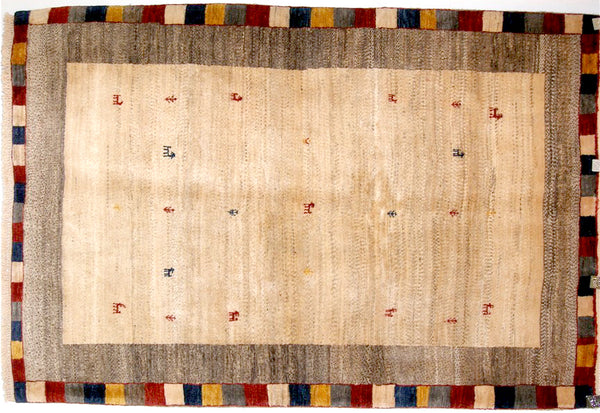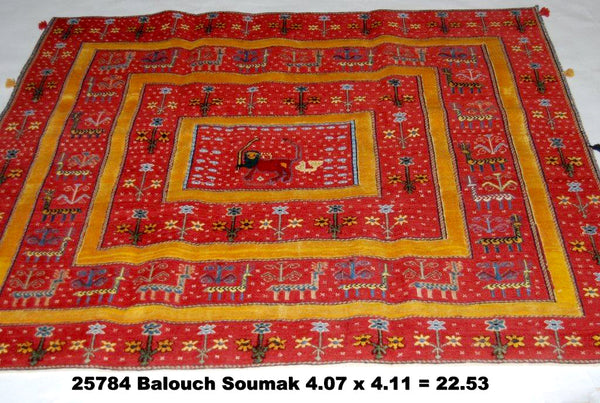The Story of the Tribal Rugs of Iran
The supply of these rugs is very limited and what you see on this site from Iran you won't see again because of the embargo on Persian rugs. We've chosen to feature these Balouch Soumak and Gabbeh-type rugs, even though they're unique and can't be duplicated in the much more profitable "programmed" rugs, because we feel they lend a special interest and beauty to our store.
Unlike cottage weavers, workshop weavers, or city weavers, the tribal weavers achieve expressive power in their rugs through the use of color, space and proportion. The best examples are very appealing and very creative as they are one-of-a-kind works of art. Unlike the other more refined types of rugs, they are woven without a graph -- each piece is a creation of the weavers imagination. Many of the tribal rugs, such as the Gabbehs or Kashkuli rugs, are also woven on more primitive looms than the more refined types of carpets. Often these looms were designed to be rolled up and unrolled when the nomadic herders arrived at new grazing grounds.
Some of these rugs, such as the older gabbehs, are reminiscent of animal pelts -- thick and shaggy. Some historians believe pelts were the inspiration for these primitive types of rugs.
The Rugs we show here are modeled after gabbeh designs, including the Balouch soumak rugs. (The rugs previously known as Balouch soumaks are much more muted.) These are interpretations of gabbeh designs done with vegetal dyes in knotted pile combined with a fine soumak weave. When they're done well, these modern-day versions of the gabbehs and Balouch soumaks have great appeal to western rug buyers because of their spontaneity and charm as well as value as pieces of wonderful art.
***A caveat from A Rug For All Reasons: The photographs of these rugs don't represent these rugs as well as they could. While we aren't happy to have photographs that don't show a rug to its best advantage, our devotion to these rugs surpasses those considerations. We feel that you'll understand how special they are, even with the limitations of the photos.
When the old Gabbehs became rare, Gholamreza Zollanvari started to work together with the Gashgai Nomads to produce new ones. By this time, the natural dyes had disappeared along with the use of handspun wool. Zollanvari started producing the Gabbeh with handspun wool, vegetable dyes and in european sizes. That is why, still today, Gholamreza is called “the father of the modern Gabbeh.” They have found tremendous popularity in Europe and the Americas. Unfortunately, because of the embargo on Persian rugs in the United States, these are the last of this type of tribal rug from Iran that we may see for sale here -- ever.
View our Persian Tribal collection
The following books give you a good overview of the history of the patterns, the carpets and the nomads:




